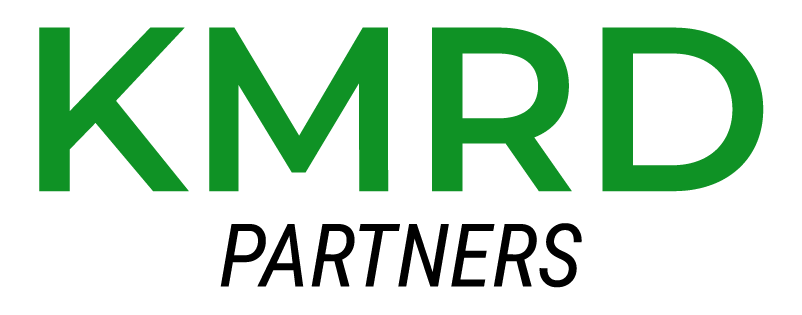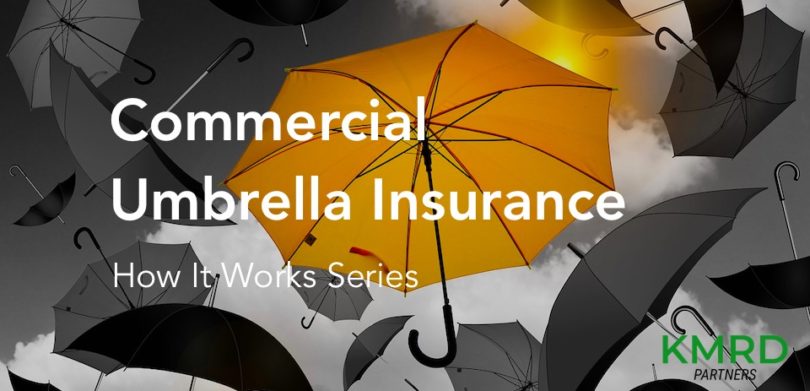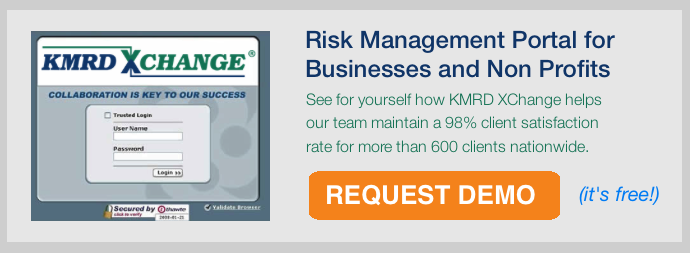Here’s How Commercial Umbrella Insurance Works
Unsure what is exactly covered by a commercial umbrella insurance policy? This KMRD blog post explains how it works.
A company’s business liability policy outlines the maximum amount the insurance company will pay against a liability claim. So if the small business is sued $1.5 million for medical costs associated with an injury caused by a worksite or product hazard, and the general liability coverage caps out at $1 million, the business would be responsible for paying the $500,000 difference.
What’s more, the small business would be responsible for paying all costs in any insurance settlement if the claim is excluded from the general liability coverage or other coverages, including hired and non-owned auto liability and employer’s liability.
How Commercial Umbrella Insurance Works
Commercial umbrella insurance policies can provide broader coverage as well as additional coverage. Unlike excess policies, which are normally “following form” policies mirroring the coverage of the underlying policy while adding their own excess limits, umbrella policies go a step further by providing broader coverage beyond the underlying policy. This can be as simple as expanding the coverage area for auto accidents.
A commercial umbrella insurance policy can also lack exclusions included in the underlying policy. Thus, an umbrella policy may cover certain risks from the first dollar of loss or liability incurred, even when the liability is not covered by the underlying policy. For risks left uncovered by the underlying policy but are covered under the umbrella policy, the umbrella policy is said to “drop down.”
Does your commercial umbrella insurance policy adequately cover your business?
The umbrella policy covers these risks as primary insurance and fills in gaps left by the underlying liability policy. Hence, the term “umbrella” describes how the policy provides broader coverage beyond the underlying policy to the insured.
Commercial umbrella policies can protect a small business against catastrophic losses. Commercial umbrella policies are often designed to protect organizations against catastrophic loss stemming from a broad range of events – from “slip and falls” to advertising errors to reputation damage through social media to injuries resulting from vehicular accidents. The heightened tendency of individuals and businesses to sue for redress of perceived or actual wrongs in the current environment, along with the large size of settlements awarded to plaintiffs, adds urgency to the addition of umbrella insurance to an underlying policy.
See also: 6 Critical Insurance Provisions in Commercial Leases
Commercial umbrella policies don’t cover all risks. It is important to realize commercial umbrella insurance does not cover damage to the insured’s property, plant and equipment in the event of a fire, flood, earthquake, hurricane, industrial accident, etc. It will only cover property damage and bodily injury the insured causes to a third party.
Commercial umbrella policies also don’t cover errors and omissions / professional liability insurance claims. For the risks commercial umbrella coverage cannot supplement, the only practical solution is for a company to increase coverage by raising the underlying policy limits.
Of course, commercial umbrella policies do not cover any expenses already covered by an underlying policy. On the flip side, a commercial umbrella policy will only cover expenses if there is an underlying policy in place.
See also: 3 Things You Need to Know About Umbrella Insurance for Business
Commercial umbrella insurance policies are tailored to meet the particular needs of individual businesses. Physicians’ practices, law firms, advertising agencies, commercial printers, limousine companies, auto shops, and hundreds of other businesses need expanded coverage for different perils. For example, a law firm that entertains clients may require expanded liquor liability limits, a limousine company may require expanded Business Auto and an advertising agency may require expanded reputation management coverage.
Underlying policies typically have high limits. Underlying limits for commercial umbrella policies can be as high as $1 million. Also keep in mind if a small business insured has significant advertising or other personal injury exposures, or other special limited liability exposures, the underwriter may require high limits for underlying coverage be included in the umbrella coverage.
KMRD’s clients are supported by risk professionals with years of proven experience and our team partners to deliver a full consultative, outsourced risk management service that is customized to your specific organization’s needs.
Contact us to have a KMRD expert identify all your commercial umbrella coverage gaps.

Bob Dietzel is the Co-Founder and Principal at KMRD Partners Risk & Insurance Solutions, a leading risk management and human capital solutions firm the Philadelphia region.
Contact UsMeet the KMRD Team About KMRD
The content available on or through this e-letter is in no way intended to and shall not be construed to constitute professional medical, health, legal, tax or financial advice. KMRD Partners disclaims any liability or loss in connection with the content contained in this e-letter.
How KMRD Can Help:
KMRD delivers risk management and human capital solutions to over 2000 clients nationwide. Our award-winning team, disciplined approach, proven processes, combined with our risk management portal make KMRD the leading outsourced risk partner to secure your business and reduce the overall cost of risk.






